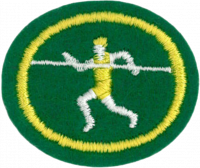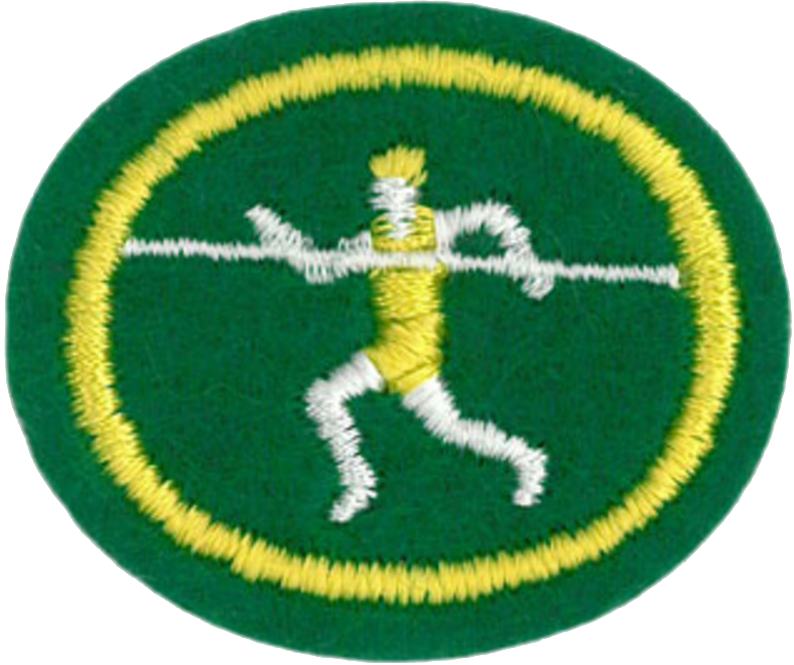Difference between revisions of "AY Honors/Track & Field/Answer Key/es"
(Created page with "{{clear}}") |
(Updating to match new version of source page) |
||
| (38 intermediate revisions by 2 users not shown) | |||
| Line 1: | Line 1: | ||
| − | + | {{HonorSubpage}} | |
| − | + | <!--{{Honor_Master|honor=Track & Field|master=Sportsman}}--> | |
| − | {{ | ||
| − | |||
| − | |||
| − | |||
| − | |||
| − | |||
| − | |||
| − | |||
| − | }} | ||
| − | |||
| − | {{Honor_Master | ||
| − | |||
| − | |||
<section begin="Body" /> | <section begin="Body" /> | ||
{{ansreq|page={{#titleparts:{{PAGENAME}}|2|1}}|num=1}} | {{ansreq|page={{#titleparts:{{PAGENAME}}|2|1}}|num=1}} | ||
| Line 65: | Line 52: | ||
{{clear}} | {{clear}} | ||
| − | + | {{clear}} | |
| − | |||
| − | |||
| − | + | {{clear}} | |
| − | |||
| − | |||
| − | |||
| − | + | {{clear}} | |
| − | |||
| − | + | {{clear}} | |
| − | |||
| − | + | {{clear}} | |
| − | |||
| − | |||
| − | + | {{clear}} | |
| − | + | {{clear}} | |
| − | |||
| − | + | {{clear}} | |
| − | |||
<noinclude></noinclude> | <noinclude></noinclude> | ||
| Line 96: | Line 72: | ||
{{ansreq|page={{#titleparts:{{PAGENAME}}|2|1}}|num=2}} | {{ansreq|page={{#titleparts:{{PAGENAME}}|2|1}}|num=2}} | ||
<noinclude></noinclude> | <noinclude></noinclude> | ||
| − | <!-- 2. | + | <!-- 2. Correr 50 yardas (45 metros), guiarse con el tiempo (en segundos) para el sexo y la edad que corresponda a continuación: --> |
<noinclude></noinclude> | <noinclude></noinclude> | ||
| Line 102: | Line 78: | ||
{{ansreq|page={{#titleparts:{{PAGENAME}}|2|1}}|num=3}} | {{ansreq|page={{#titleparts:{{PAGENAME}}|2|1}}|num=3}} | ||
<noinclude></noinclude> | <noinclude></noinclude> | ||
| − | <!-- 3. | + | <!-- 3. En las carreras de velocidad rápida, ¿qué parte de los pies debe tocar primero durante la zancada? ¿Cuáles son las posiciones adecuadas de los brazos y de la cabeza? --> |
| − | |||
| − | + | {{clear}} | |
<noinclude></noinclude> | <noinclude></noinclude> | ||
| Line 111: | Line 86: | ||
{{ansreq|page={{#titleparts:{{PAGENAME}}|2|1}}|num=4}} | {{ansreq|page={{#titleparts:{{PAGENAME}}|2|1}}|num=4}} | ||
<noinclude></noinclude> | <noinclude></noinclude> | ||
| − | <!-- 4. | + | <!-- 4. Correr 600 yardas (545 metros) caminar o correr en el tiempo (minutos/segundos) para su sexo y edad de la siguiente manera: --> |
<noinclude></noinclude> | <noinclude></noinclude> | ||
| Line 117: | Line 92: | ||
{{ansreq|page={{#titleparts:{{PAGENAME}}|2|1}}|num=5}} | {{ansreq|page={{#titleparts:{{PAGENAME}}|2|1}}|num=5}} | ||
<noinclude></noinclude> | <noinclude></noinclude> | ||
| − | <!-- 5. | + | <!-- 5. Responder las siguientes preguntas acerca de las carreras de larga distancia: --> |
<noinclude></noinclude> | <noinclude></noinclude> | ||
{{ansreq|page={{#titleparts:{{PAGENAME}}|2|1}}|num=5a}} | {{ansreq|page={{#titleparts:{{PAGENAME}}|2|1}}|num=5a}} | ||
| Line 125: | Line 100: | ||
|chapter=18 | |chapter=18 | ||
|verse=24-27 | |verse=24-27 | ||
| − | |version= | + | |version=RVR1995 |
|text= | |text= | ||
| − | <sup>24</sup> | + | <sup>24</sup> David estaba sentado entre las dos puertas. El atalaya había ido al terrado sobre la puerta en el muro y, alzando sus ojos, miró y vio a uno que corría solo. <sup>25</sup> El atalaya dio un grito y lo hizo saber al rey, el cual dijo: |
| − | : | + | |
| + | —Si viene solo, buenas noticias trae. | ||
| + | |||
| + | Mientras el hombre venía acercándose, <sup>26</sup> vio el atalaya a otro que corría. Dio voces el atalaya al portero diciendo: «Ahí viene otro hombre corriendo solo.» | ||
| + | |||
| + | —También éste es un mensajero —dijo el rey. | ||
| + | |||
| + | <sup>27</sup> El atalaya dijo de nuevo: | ||
| − | + | —Me parece que el primero corre como Ahimaas hijo de Sadoc. | |
| − | |||
| − | + | —Ése es hombre de bien y viene con buenas noticias —dijo entonces el rey. | |
| − | |||
}} | }} | ||
| + | |||
| + | {{clear}} | ||
| + | |||
| + | {{clear}} | ||
{{Bible verse | {{Bible verse | ||
| − | |book = 1 | + | |book = 1 Corintios |
|chapter=9 | |chapter=9 | ||
|verse = 24-27 | |verse = 24-27 | ||
| − | |version= | + | |version=RVR1995 |
|text= | |text= | ||
| − | <sup>24</sup> | + | <sup>24</sup> ¿No sabéis que los que corren en el estadio, todos a la verdad corren, pero uno solo se lleva el premio? Corred de tal manera que lo obtengáis. <sup>25</sup> Todo aquel que lucha, de todo se abstiene; ellos, a la verdad, para recibir una corona corruptible, pero nosotros, una incorruptible. <sup>26</sup> Así que yo de esta manera corro, no como a la ventura; de esta manera peleo, no como quien golpea el aire; <sup>27</sup> sino que golpeo mi cuerpo y lo pongo en servidumbre, no sea que, habiendo sido heraldo para otros, yo mismo venga a ser eliminado. |
| + | }} | ||
| − | + | {{clear}} | |
| − | }} | ||
<noinclude></noinclude> | <noinclude></noinclude> | ||
| Line 152: | Line 136: | ||
{{ansreq|page={{#titleparts:{{PAGENAME}}|2|1}}|num=5b}} <!--T:23--> | {{ansreq|page={{#titleparts:{{PAGENAME}}|2|1}}|num=5b}} <!--T:23--> | ||
<noinclude></noinclude> | <noinclude></noinclude> | ||
| − | |||
| − | |||
<noinclude></noinclude> | <noinclude></noinclude> | ||
{{CloseReq}} <!-- 5b --> | {{CloseReq}} <!-- 5b --> | ||
{{ansreq|page={{#titleparts:{{PAGENAME}}|2|1}}|num=5c}} <!--T:24--> | {{ansreq|page={{#titleparts:{{PAGENAME}}|2|1}}|num=5c}} <!--T:24--> | ||
| − | <noinclude></noinclude> | + | <noinclude></noinclude><noinclude></noinclude> |
| − | |||
| − | <noinclude></noinclude> | ||
{{CloseReq}} <!-- 5c --> | {{CloseReq}} <!-- 5c --> | ||
{{ansreq|page={{#titleparts:{{PAGENAME}}|2|1}}|num=5d}} | {{ansreq|page={{#titleparts:{{PAGENAME}}|2|1}}|num=5d}} | ||
<noinclude></noinclude> | <noinclude></noinclude> | ||
| − | |||
<noinclude></noinclude> | <noinclude></noinclude> | ||
{{CloseReq}} <!-- 5d --> | {{CloseReq}} <!-- 5d --> | ||
{{ansreq|page={{#titleparts:{{PAGENAME}}|2|1}}|num=5e}} <!--T:25--> | {{ansreq|page={{#titleparts:{{PAGENAME}}|2|1}}|num=5e}} <!--T:25--> | ||
| − | <noinclude></noinclude> | + | <noinclude></noinclude><noinclude></noinclude> |
| − | |||
| − | <noinclude></noinclude> | ||
{{CloseReq}} <!-- 5e --> | {{CloseReq}} <!-- 5e --> | ||
{{ansreq|page={{#titleparts:{{PAGENAME}}|2|1}}|num=5f}} | {{ansreq|page={{#titleparts:{{PAGENAME}}|2|1}}|num=5f}} | ||
<noinclude></noinclude> | <noinclude></noinclude> | ||
| − | |||
<noinclude></noinclude> | <noinclude></noinclude> | ||
| Line 181: | Line 157: | ||
{{ansreq|page={{#titleparts:{{PAGENAME}}|2|1}}|num=5g}} <!--T:26--> | {{ansreq|page={{#titleparts:{{PAGENAME}}|2|1}}|num=5g}} <!--T:26--> | ||
<noinclude></noinclude> | <noinclude></noinclude> | ||
| − | |||
<noinclude></noinclude> | <noinclude></noinclude> | ||
| Line 187: | Line 162: | ||
{{ansreq|page={{#titleparts:{{PAGENAME}}|2|1}}|num=5h}} <!--T:27--> | {{ansreq|page={{#titleparts:{{PAGENAME}}|2|1}}|num=5h}} <!--T:27--> | ||
<noinclude></noinclude> | <noinclude></noinclude> | ||
| − | |||
<noinclude></noinclude> | <noinclude></noinclude> | ||
| Line 194: | Line 168: | ||
{{ansreq|page={{#titleparts:{{PAGENAME}}|2|1}}|num=6}} | {{ansreq|page={{#titleparts:{{PAGENAME}}|2|1}}|num=6}} | ||
<noinclude></noinclude> | <noinclude></noinclude> | ||
| − | <!-- 6. | + | <!-- 6. Correr uno de los siguientes eventos por lo menos dos veces y alcanzar el mejor tiempo: --> |
<noinclude></noinclude> | <noinclude></noinclude> | ||
{{ansreq|page={{#titleparts:{{PAGENAME}}|2|1}}|num=6a}} | {{ansreq|page={{#titleparts:{{PAGENAME}}|2|1}}|num=6a}} | ||
| Line 202: | Line 176: | ||
{{ansreq|page={{#titleparts:{{PAGENAME}}|2|1}}|num=6b}} | {{ansreq|page={{#titleparts:{{PAGENAME}}|2|1}}|num=6b}} | ||
<noinclude></noinclude> | <noinclude></noinclude> | ||
| − | |||
<noinclude></noinclude> | <noinclude></noinclude> | ||
| Line 209: | Line 182: | ||
{{ansreq|page={{#titleparts:{{PAGENAME}}|2|1}}|num=7}} | {{ansreq|page={{#titleparts:{{PAGENAME}}|2|1}}|num=7}} | ||
<noinclude></noinclude> | <noinclude></noinclude> | ||
| − | <!-- 7. | + | <!-- 7. Hacer el salto de altura de buena forma por lo menos cinco veces y anotar el mayor salto. --> |
| − | |||
| − | + | {{clear}} | |
| − | + | {{clear}} | |
<noinclude></noinclude> | <noinclude></noinclude> | ||
| Line 220: | Line 192: | ||
{{ansreq|page={{#titleparts:{{PAGENAME}}|2|1}}|num=8}} | {{ansreq|page={{#titleparts:{{PAGENAME}}|2|1}}|num=8}} | ||
<noinclude></noinclude> | <noinclude></noinclude> | ||
| − | <!-- 8. | + | <!-- 8. Hacer un salto largo tres veces y registrar la mejor distancia. --> |
| − | |||
| − | + | {{clear}} | |
<noinclude></noinclude> | <noinclude></noinclude> | ||
| Line 229: | Line 200: | ||
{{ansreq|page={{#titleparts:{{PAGENAME}}|2|1}}|num=9}} | {{ansreq|page={{#titleparts:{{PAGENAME}}|2|1}}|num=9}} | ||
<noinclude></noinclude> | <noinclude></noinclude> | ||
| − | <!-- 9. | + | <!-- 9. Ejecutar los siguientes relevos: --> |
<noinclude></noinclude> | <noinclude></noinclude> | ||
{{ansreq|page={{#titleparts:{{PAGENAME}}|2|1}}|num=9a}} | {{ansreq|page={{#titleparts:{{PAGENAME}}|2|1}}|num=9a}} | ||
| Line 237: | Line 208: | ||
{{ansreq|page={{#titleparts:{{PAGENAME}}|2|1}}|num=9b}} | {{ansreq|page={{#titleparts:{{PAGENAME}}|2|1}}|num=9b}} | ||
<noinclude></noinclude> | <noinclude></noinclude> | ||
| − | |||
<noinclude></noinclude> | <noinclude></noinclude> | ||
| Line 243: | Line 213: | ||
{{CloseReq}} <!-- 9 --> | {{CloseReq}} <!-- 9 --> | ||
<noinclude></noinclude> | <noinclude></noinclude> | ||
| − | == | + | ==Referencias== |
| − | |||
<noinclude></noinclude> | <noinclude></noinclude> | ||
| − | + | {{CloseHonorPage}} | |
| − | |||
Latest revision as of 00:11, 19 July 2022
Nivel de destreza
2
Año
1978
Version
22.12.2025
Autoridad de aprobación
Asociación General
1
2
| Edad | 10 | 11 | 12 | 13 | 14 | 15 | 16 |
| Muchachos | 8.2 | 8.0 | 7.8 | 7.5 | 7.1 | 6.9 | 6.7 |
|---|---|---|---|---|---|---|---|
| Muchachas | 8.5 | 8.4 | 8.2 | 8.1 | 8.0 | 8.1 | 8.3 |
3
4
| Edad | 10 | 11 | 12 | 13 | 14 | 15 | 16 |
| Muchachos | 2'33" | 2'27" | 2'21" | 2'10" | 2'01" | 1'54" | 1'51" |
|---|---|---|---|---|---|---|---|
| Muchachas | 2'48" | 2'49" | 2'49" | 2'52" | 2'46" | 2'46" | 2'49" |
5
5a
24 David estaba sentado entre las dos puertas. El atalaya había ido al terrado sobre la puerta en el muro y, alzando sus ojos, miró y vio a uno que corría solo. 25 El atalaya dio un grito y lo hizo saber al rey, el cual dijo:
—Si viene solo, buenas noticias trae.
Mientras el hombre venía acercándose, 26 vio el atalaya a otro que corría. Dio voces el atalaya al portero diciendo: «Ahí viene otro hombre corriendo solo.»
—También éste es un mensajero —dijo el rey.
27 El atalaya dijo de nuevo:
—Me parece que el primero corre como Ahimaas hijo de Sadoc.
—Ése es hombre de bien y viene con buenas noticias —dijo entonces el rey.
24 ¿No sabéis que los que corren en el estadio, todos a la verdad corren, pero uno solo se lleva el premio? Corred de tal manera que lo obtengáis. 25 Todo aquel que lucha, de todo se abstiene; ellos, a la verdad, para recibir una corona corruptible, pero nosotros, una incorruptible. 26 Así que yo de esta manera corro, no como a la ventura; de esta manera peleo, no como quien golpea el aire; 27 sino que golpeo mi cuerpo y lo pongo en servidumbre, no sea que, habiendo sido heraldo para otros, yo mismo venga a ser eliminado.
5b
5c
5d
5e
5f
5g
5h
6
6a
6b
7
8
9
9a
9b


